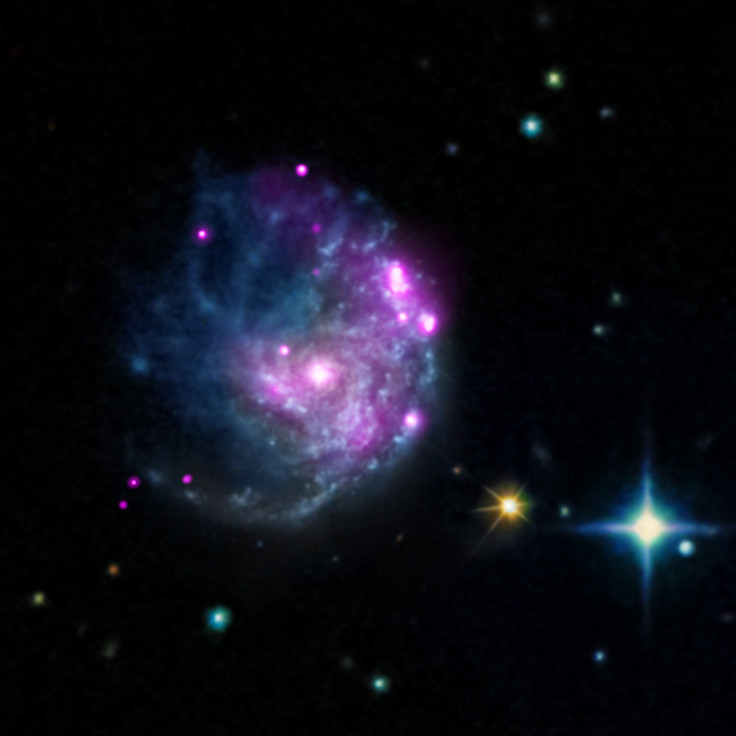NASA Spots Strange Galaxy With Missing Link Black Hole

NASA’s Chandra X-ray Observatory recently shared an image of a peculiar galaxy with an intriguing black hole. According to scientists, the galaxy’s black hole might be the missing link that could shed light on the formation of its supermassive counterparts.
The galaxy featured in Chandra’s photo has been identified as NGC 2276. This galaxy is located in the constellation Cepheus and lies about 105 million light-years from Earth.
NGC 2276 is classified as an intermediate spiral galaxy. This means it belongs to a group that falls in between galaxies with and without central bars. Unlike other notable spiral galaxies such as Milky Way, NGC 2276 does not have a very distinct shape. Instead, it has an asymmetrical structure that was most likely caused by the gravitational pull of its neighboring galaxy NGC 2300.
Aside from its shape, another interesting aspect of NGC 2276 is the black hole within one of its spindly arms. According to NASA, this cosmic object, known as NGC2276-3c, is an intermediate-mass black hole. The agency noted that this black hole is about 50,000 more massive than the Sun.
Due to NGC2276-3c’s size, which falls in between small and supermassive black holes, scientists treat it as a missing link that could explain how these cosmic objects evolve and grow.
“In paleontology, the discovery of certain fossils can help scientists fill in the evolutionary gaps between different dinosaurs,” Mar Mezcua of the Harvard-Smithsonian Center for Astrophysics and lead author of a 2015 study on NGC2276-3c said in a statement.
“We do the same thing in astronomy, but we often have to ‘dig’ up our discoveries in galaxies that are millions of light-years away,” he added.
Unlike other types of black holes, little is known about intermediate-mass ones. Fortunately, through recent studies and observations, scientists are starting to understand the nature of these medium-sized black holes.
According to Mezcua’s colleague Andrei Lobanov of the Max Planck Institute for Radio Astronomy in Germany, NGC 2276’s intermediate-mass black hole has features similar to both small and supermassive black holes.
“We found that NGC2276-3c has traits similar to both stellar-mass black holes and supermassive black holes,” he said. “In other words, this object helps tie the whole black hole family together.”
© Copyright IBTimes 2024. All rights reserved.





















